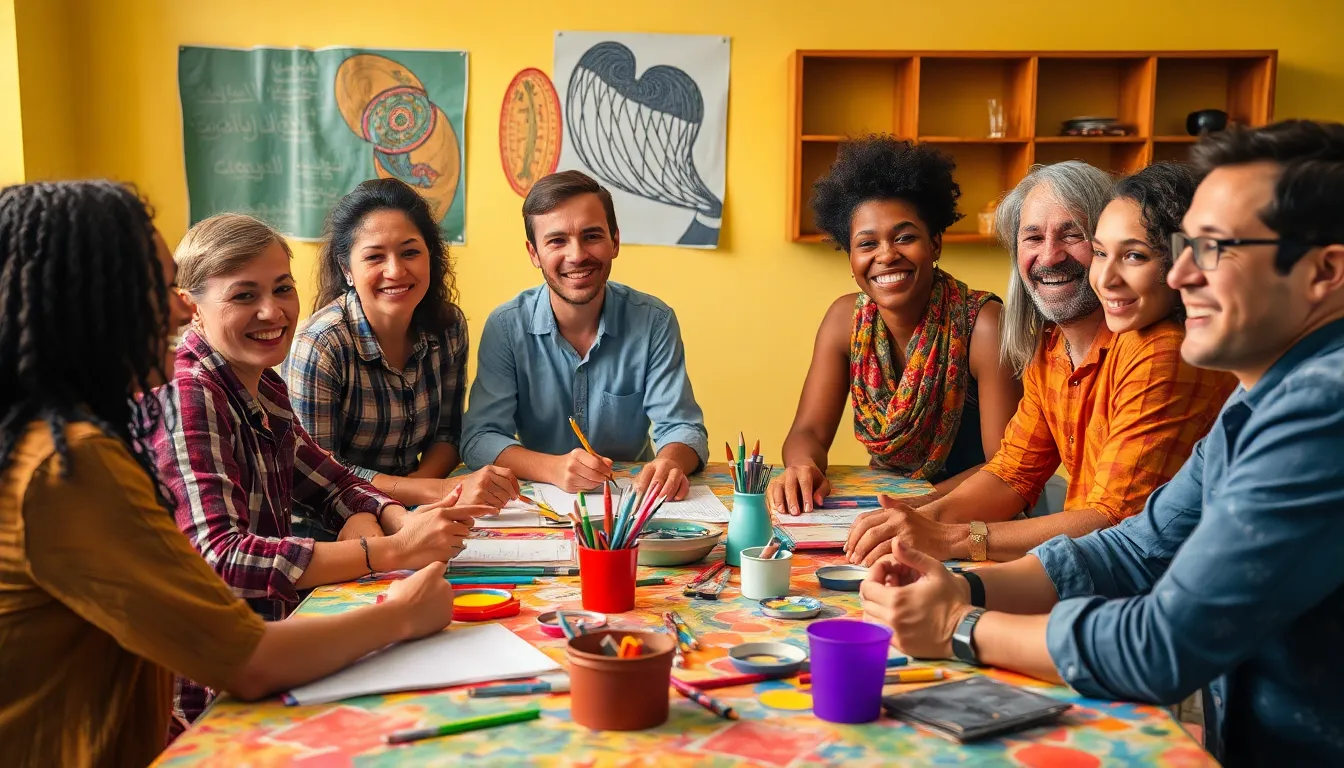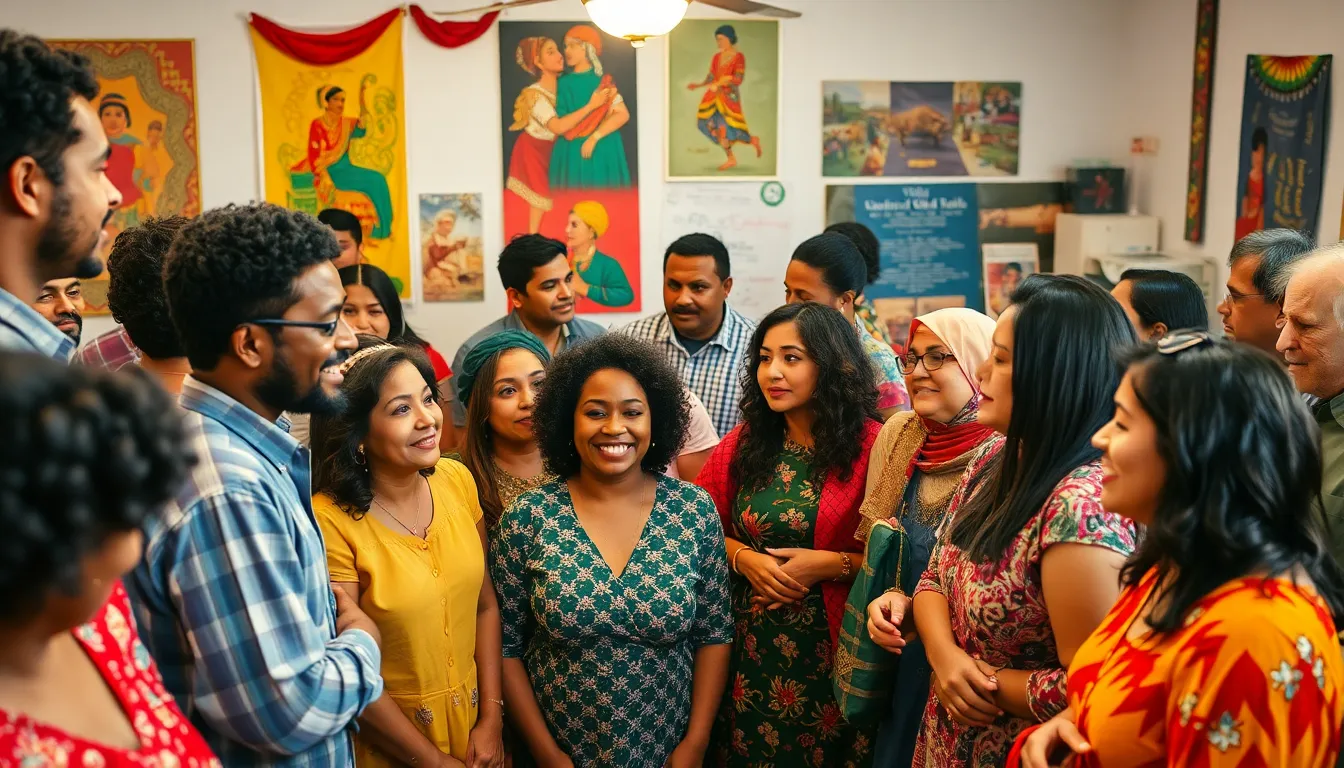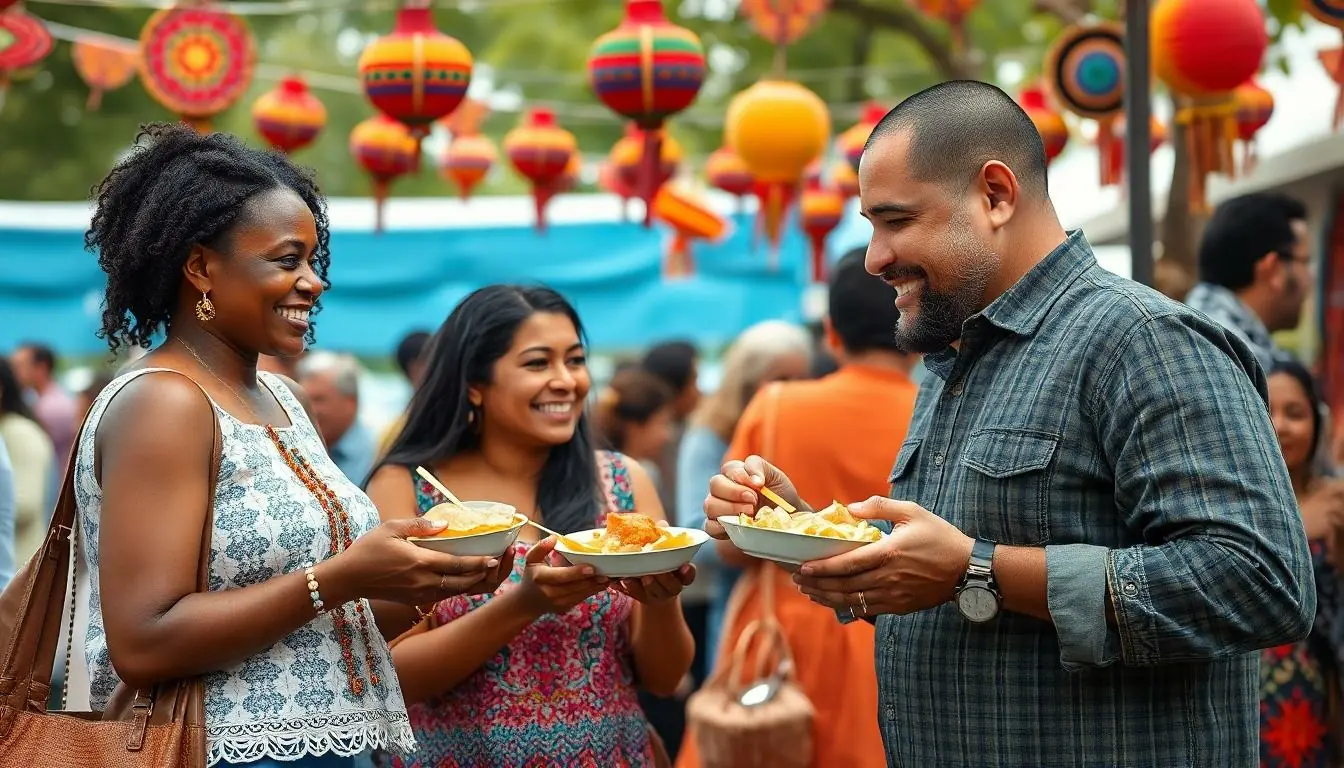Table of Contents
ToggleCultural representation isn’t just a buzzword; it’s the heartbeat of society. It shapes how communities see themselves and how the world sees them. Imagine a world where everyone’s story gets a spotlight—no more one-size-fits-all narratives. Instead, we get a colorful tapestry woven from diverse threads, each telling its own unique tale.
But let’s face it, sometimes the portrayal can be as off as a karaoke night gone wrong. From clumsy stereotypes to token characters, the stakes are high. When done right, cultural representation can inspire, educate, and entertain, making us laugh and think all at once. So buckle up as we dive into the importance of authentic representation and why it’s crucial for a richer, more inclusive narrative.
Understanding Cultural Representation
Cultural representation encompasses the ways in which diverse cultures are expressed and portrayed within media and society. It plays a crucial role in forming identities and perceptions within communities.
Definition and Importance
Cultural representation refers to the depiction of various cultural identities and experiences in art, media, and literature. Accurate representation fosters understanding, amplifies voices, and promotes inclusivity. By reflecting authentic cultures, creators challenge stereotypes and create opportunities for dialogue. Moreover, genuine representation enriches narratives, allowing individuals to connect and empathize with experiences outside their own. Diverse storytelling not only helps dismantle prejudices but also cultivates a broader appreciation for cultural differences.
Historical Context
Historical representation of cultures has evolved significantly over time. Earlier depictions often perpetuated stereotypes, frequently reducing cultures to simplistic narratives. These portrayals limited understanding and contributed to cultural misconceptions. The 20th century marked a shift, as movements for civil rights and social justice sparked a demand for more accurate representations. In recent decades, creators increasingly recognize the necessity of diverse voices. This growing awareness enhances visibility and reshapes the conversation around cultural dynamics in media, fostering a richer understanding of societal complexities.
Types of Cultural Representation

Cultural representation encompasses both positive and negative aspects, each playing a significant role in shaping perceptions and identity. Understanding these dimensions enriches the discourse on diversity in storytelling.
Positive Representation
Positive representation involves authentic portrayals that uplift and empower communities. Diverse characters reflect real-life experiences, helping marginalized groups feel seen and valued. Examples include films featuring strong female leads or narratives centered around ethnic minorities that highlight their achievements. This form of representation challenges societal stereotypes and fosters empathy among audiences. Authentic voices resonate deeply, often bridging gaps between cultures and encouraging collaboration. When creators prioritize nuanced storytelling, they inspire others to engage with various cultures respectfully and positively.
Negative Representation
Negative representation manifests through stereotypes and misrepresentation, which can perpetuate harmful narratives. Such portrayals often marginalize certain groups or depict them in a one-dimensional light. Common examples include characters that reinforce clichés or reduce complex identities to simple traits. These narratives can lead to misunderstanding and desensitization towards cultural issues. Misrepresentation in media often shapes public opinion and can contribute to systemic discrimination. Consequently, negative representation undermines the efforts toward inclusivity and understanding among diverse populations. Addressing these portrayals is essential in the journey toward fostering genuine cultural representation.
Impact of Cultural Representation in Media
Cultural representation holds significant power in shaping perceptions across various media forms. This influence extends to fostering understanding and empathy among diverse audiences.
Television and Film
Television and film serve as primary vehicles for cultural representation, showcasing diverse stories that resonate with audiences. They often spotlight authentic narratives, which challenge stereotypes and offer nuanced perspectives. Many successful series and movies feature characters from underrepresented backgrounds, allowing viewers to see their lives portrayed honestly. This visibility empowers marginalized groups and promotes acceptance, ultimately shifting societal views. High-profile productions featuring strong representation can lead to increased interest in diverse stories and inspire upcoming creators to explore varied experiences.
Literature and Arts
Literature and arts play vital roles in cultural representation, providing platforms for nuanced expression. Authors and artists convey complex identities through their work, often intertwining personal experiences with universal themes. Diverse literary voices allow readers to gain insights into different cultures, fostering empathy and understanding. Works that feature rich cultural contexts help dismantle stereotypes and challenge misconceptions. Moreover, inclusive representation in the arts encourages all individuals to see themselves reflected in various narratives, proving that stories shared resonate beyond one’s own experience.
Challenges in Cultural Representation
Cultural representation faces significant challenges that undermine its effectiveness. Addressing issues such as stereotyping and underrepresentation remains vital.
Stereotyping and Misrepresentation
Stereotyping emerges as a major obstacle in cultural representation. It reduces complex identities to simple traits, painting an inaccurate picture of diverse communities. Misrepresentation occurs frequently in media, where characters often reflect societal clichés rather than authentic experiences. Such portrayals contribute to misunderstandings and perpetuate harmful narratives that alienate marginalized groups. Media outlets and creators play a crucial role in counteracting this trend by fostering a commitment to accuracy. A strong focus on nuanced storytelling can help audiences appreciate cultural richness. Concerted efforts to challenge stereotypes ultimately lead to more authentic representation.
Underrepresentation of Marginalized Groups
Underrepresentation impacts many aspects of cultural narrative. Numerous marginalized groups remain absent from mainstream media, leading to a lack of visibility. When diverse voices are overlooked, the richness of cultural experiences suffers. Many creators fail to include these perspectives, allowing stereotypes to dominate popular narratives. This lack of representation can reinforce societal biases and limit understanding. Diverse casting choices and inclusive storytelling are essential to address these gaps. Measurable increases in representation lead to deeper connections and greater empathy among audiences. Prioritizing the inclusion of marginalized voices enriches cultural dialogue and fosters inclusivity.
Strategies for Better Cultural Representation
Genuine cultural representation relies on effective strategies to enhance inclusivity and authenticity. Implementing these strategies can significantly shape storytelling and audience engagement.
Inclusive Storytelling
Authentic storytelling reflects the complexities of cultural identities. Creators can prioritize accuracy by consulting with individuals from the cultures represented. They should ensure that narratives highlight diverse experiences rather than relying on stereotypes. Audiences often resonate more with characters that embody real-life struggles and triumphs. By showcasing varied perspectives, storytellers can foster empathy and spark meaningful conversations. Effective representation often means creating relatable characters that reflect the richness of cultural experiences.
Collaboration with Diverse Voices
Collaboration with creators from varied backgrounds is essential for impactful representation. Engaging with diverse voices throughout the creative process enhances authenticity in narratives. Producers and directors should invite input from cultural consultants to refine storytelling. Productions that involve cross-cultural collaborations often benefit from unique insights. Authentic voices provide depth to characters and enrich the storyline. This collaborative approach not only amplifies underrepresented voices but also challenges prevailing narratives, fostering a more inclusive media landscape.
Conclusion
Cultural representation plays a crucial role in shaping society’s understanding of diverse identities. By embracing authentic storytelling and moving away from stereotypes, creators can foster deeper connections and empathy among audiences. This commitment to inclusivity not only enriches narratives but also empowers marginalized voices, ensuring they are seen and valued.
As the media landscape continues to evolve, the push for genuine representation remains vital. It invites ongoing dialogue and challenges creators to reflect the complexities of human experience. Ultimately, prioritizing cultural representation paves the way for a richer and more inclusive narrative that resonates across communities.







